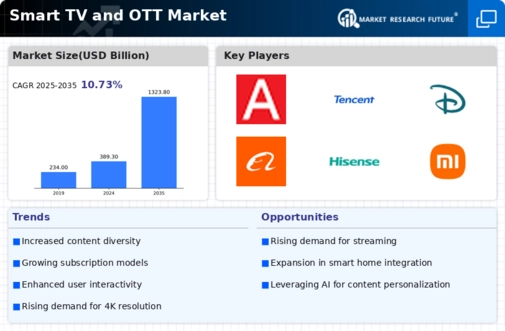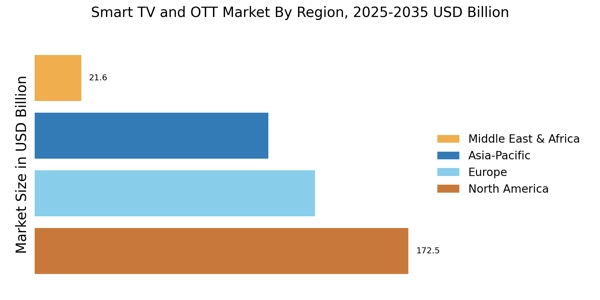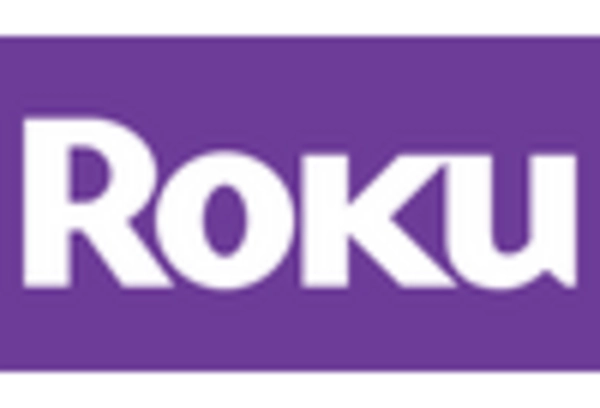Rise of Subscription-Based Models
The Smart TV and OTT Market is significantly influenced by the rise of subscription-based streaming services. Platforms such as Netflix, Hulu, and Disney+ have transformed how consumers access content, leading to a decline in traditional cable subscriptions. Recent statistics suggest that over 80% of households now subscribe to at least one streaming service, reflecting a shift in consumer behavior towards on-demand content. This trend is expected to persist, as more consumers seek flexible viewing options without the constraints of cable contracts. Consequently, the proliferation of subscription models is likely to propel the Smart TV and OTT Market forward, as these services often require compatible smart devices for optimal viewing.
Increased Internet Penetration and Bandwidth
The Smart TV and OTT Market is benefiting from increased internet penetration and improved bandwidth availability. As more households gain access to high-speed internet, the ability to stream content seamlessly has become a reality for many consumers. Data indicates that broadband subscriptions have grown significantly, with a notable increase in fiber-optic connections, which offer faster speeds and more reliable service. This enhanced connectivity enables users to enjoy high-quality streaming experiences without interruptions. As a result, the Smart TV and OTT Market is likely to see continued growth, as consumers increasingly rely on internet-based services for their entertainment needs.
Technological Advancements in Display Quality
The Smart TV and OTT Market is experiencing a notable shift due to advancements in display technologies such as OLED and QLED. These innovations enhance picture quality, providing consumers with vibrant colors and deeper contrasts. As a result, the demand for high-definition content has surged, with 4K and 8K content becoming increasingly accessible. According to recent data, the adoption of 4K TVs has reached approximately 60% of the market, indicating a strong consumer preference for superior viewing experiences. This trend is likely to continue, as manufacturers invest in research and development to further improve display technologies, thereby driving growth in the Smart TV and OTT Market.
Diverse Content Offerings and Original Programming
The Smart TV and OTT Market is characterized by a growing demand for diverse content offerings and original programming. Streaming platforms are investing heavily in creating exclusive content to attract and retain subscribers. This trend is evident in the substantial budgets allocated for original series and films, with some platforms spending billions annually. As consumers seek unique and varied content, the competition among streaming services intensifies, leading to an expansion of genres and formats. This dynamic environment is likely to drive further engagement in the Smart TV and OTT Market, as viewers are drawn to platforms that offer compelling and original content.
Integration of Artificial Intelligence and Machine Learning
The Smart TV and OTT Market is increasingly integrating artificial intelligence (AI) and machine learning (ML) technologies to enhance user experiences. These technologies enable personalized content recommendations, making it easier for viewers to discover new shows and movies tailored to their preferences. Recent studies indicate that AI-driven recommendation systems can significantly increase viewer engagement, with users spending more time on platforms that offer personalized suggestions. As AI and ML continue to evolve, their application in the Smart TV and OTT Market is expected to grow, potentially transforming how content is delivered and consumed.


















Leave a Comment